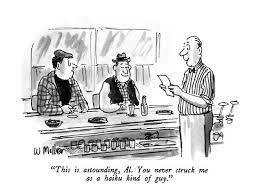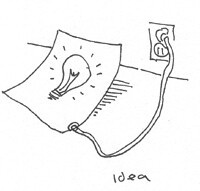e-Learning Ecologies MOOC’s Updates
Leave the Lights On: Learning for innovation/creativity
When I tell people I am a creative writer, they tend to respond in one of two ways: “I could never do that” or “Oooo. Let me see what you’ve published.” It’s not surprising. Most of us grew up in schools where creativity was something that you “did” in certain places--like art class or the theater group after school. Perhaps more concerning is that we were taught that it was frivolous. “Creativity in education often takes the form of concentrated periods of arts‐based ‘light relief’ from the rigours of the National Curriculum” (Claxton 2006).
We’ve also been led to believe that it is messy and colorful, confusing and loud. That certain personality-types are creative but the rest of us don’t “think” like they do. Remember when you were “taught” poetry in school? You spent months reading Austen or Dickens and then suddenly you had to think of your own sonnet or a haiku.
The good news is that there’s lots of evidence-based research out there that shows that creativity (thinking new ideas) and innovation (using those ideas to invent something new or change something that exists) have aspects that are knowledge and skill-based. Which means that students can learn how to think and do things that help them be creative and innovative in spite of the hierarchical, didactic and traditional structures of public education that place them in the role of knowledge consumers. It also means that we have to stop treating creativity as a series of “lightbulb” (sudden inspiration) moments and actually teach it as a skill. Developing creativity and innovative skills and habits means that we can leave the “lightbulb” on. Then students can use related knowledge and skills all the time.
Self reflection and question asking are effective ways to build these skills and strategies for educators to design their courses and classes. These are two of ten ways Robyn Shulman suggests classrooms can become more innovative. There is also a process called thinking on the edge (TATE) which was introduced by American philosopher Eugene Gendlin as a therapeutic practice. He suggested a model of embodied knowledge which has levels. The highest level involves our “word-scape,” which is talking and writing. In this model, individuals can effectively use their creativity through “exploratory writing and exploratory conversation” and develop innovative solutions to problems. These can be most easily applied in the classroom through free-writes and group brainstorming discussions.
Claxton, G. (2006). Thinking at the edge: developing soft creativity. Cambridge Journal of Education, 36(3), pp. 351–362.
https://www.forbes.com/sites/robynshulman/2018/11/19/10-ways-educators-can-make-classrooms-more-innovative/?sh=2956aa607f87
"idea" by Tony Dowler is licensed under CC BY-NC-SA 2.0



